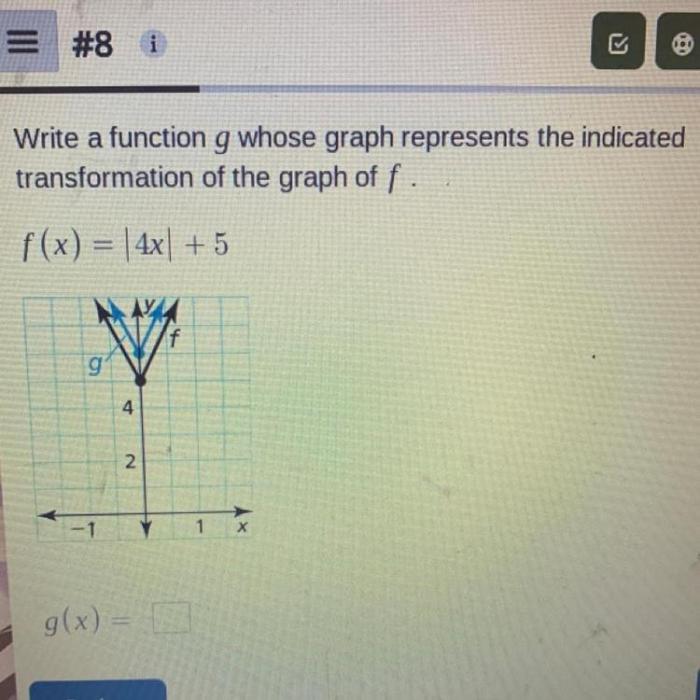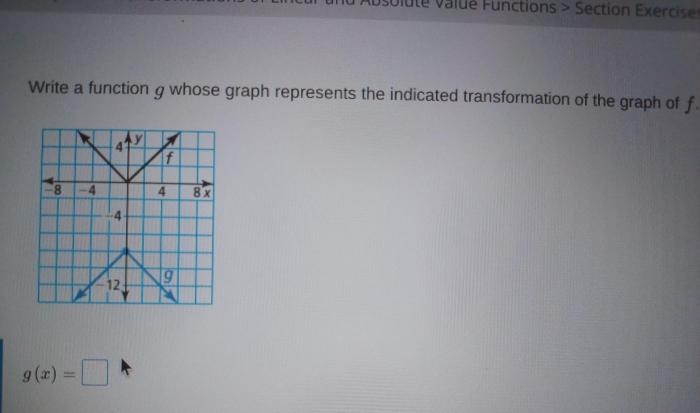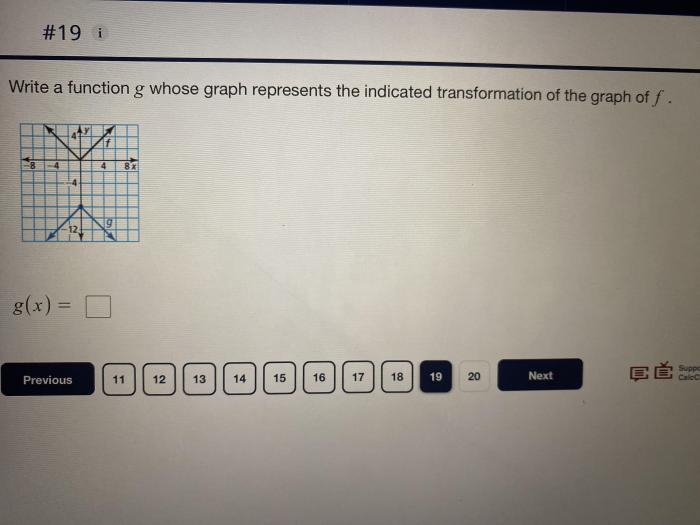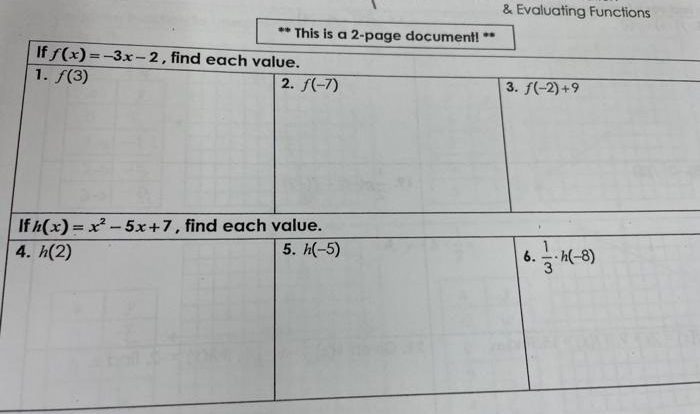In the realm of mathematics, write a function g whose graph represents the indicated transformation stands as a cornerstone concept, enabling us to explore the intricacies of function manipulation. This guide delves into the depths of transformations, empowering readers with the knowledge to identify, graph, and write equations for transformed functions.
Through a structured approach, we will unravel the essence of transformations, delving into their types, parameters, and impact on function graphs. Real-world applications will illuminate the practical significance of these transformations, showcasing their utility in diverse fields such as physics, engineering, and economics.
Understanding Function Transformations

A transformation in the context of functions refers to a mathematical operation that modifies the original function’s graph. This operation can involve moving, flipping, or stretching the graph in various ways.
Common types of transformations include:
- Translations: Moving the graph horizontally or vertically.
- Reflections: Flipping the graph across an axis.
- Dilations: Stretching or shrinking the graph.
Identifying the Transformation
To identify the type of transformation, compare the transformed graph to the original graph.
- Translation: The graph shifts horizontally or vertically.
- Reflection: The graph flips across the x-axis or y-axis.
- Dilation: The graph stretches or shrinks.
Parameters of the transformation, such as the translation vector or scale factor, can be determined by analyzing the transformed graph.
Graphing the Transformed Function
To graph a transformed function:
- Apply the transformation to the original function to obtain the transformed function.
- Plot the points of the transformed function.
- Connect the points to form the transformed graph.
For example, to graph the function f(x) + 2, shift the graph of f(x) vertically upward by 2 units.
Writing the Function Equation, Write a function g whose graph represents the indicated transformation
The transformed function equation is obtained by applying the transformation parameters to the original function equation.
- Translation: f(x) + k (vertical translation) or f(x – h) (horizontal translation)
- Reflection: -f(x) (reflection across the x-axis) or f(-x) (reflection across the y-axis)
- Dilation: af(x) (stretch or shrink by a factor of a)
For example, the function g(x) = f(x – 3) + 2 represents a function f(x) that has been translated 3 units to the right and 2 units upward.
Real-World Applications
Function transformations have numerous applications in various fields:
- Physics: Modeling motion, forces, and waves.
- Engineering: Designing structures, optimizing systems, and analyzing data.
- Economics: Modeling market trends, forecasting demand, and optimizing investments.
For example, in physics, the function describing the trajectory of a projectile can be transformed to analyze the effects of changing the launch angle or initial velocity.
FAQ Section: Write A Function G Whose Graph Represents The Indicated Transformation
What is a function transformation?
A function transformation is an operation that modifies the graph of a function by shifting, reflecting, or scaling it.
How do I identify the type of transformation applied to a function?
Examine the graph or equation of the transformed function and compare it to the original function to determine the type of transformation.
How do I write the equation of a transformed function?
Apply the transformation parameters to the original function equation using the appropriate formulas.


